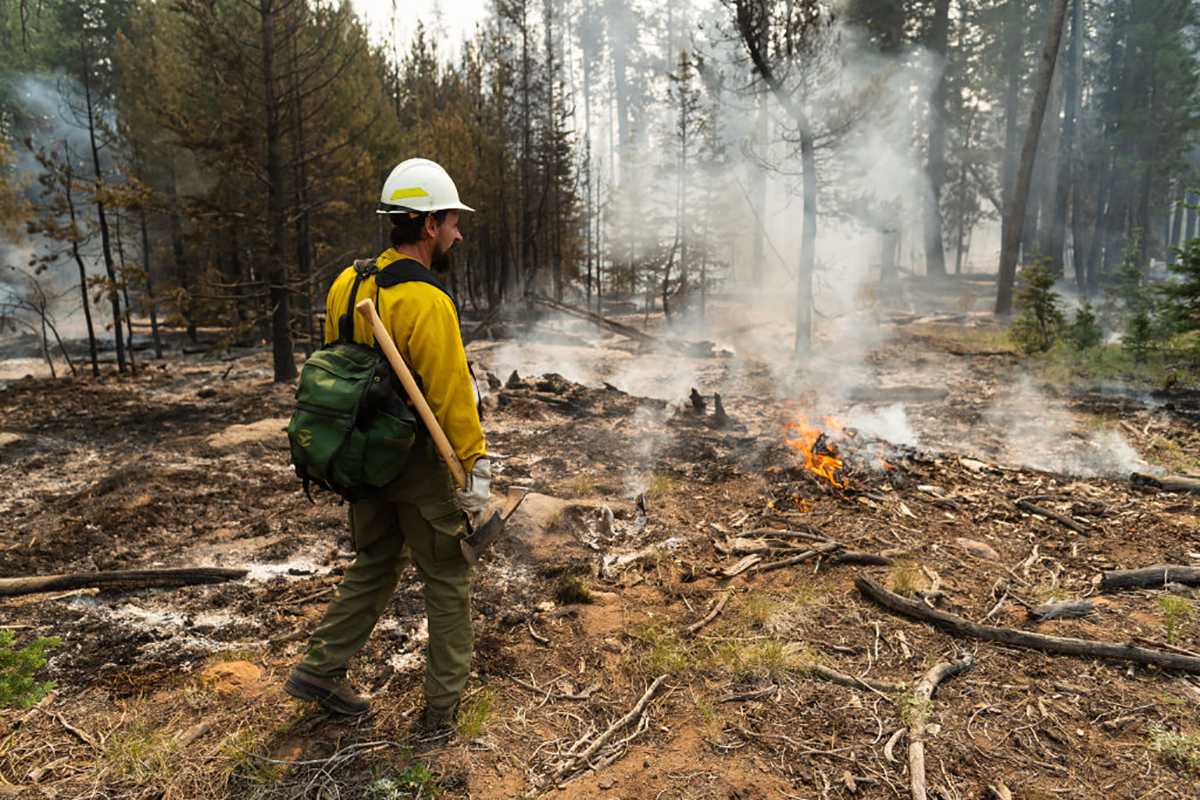Fires, Drought Slamming Much Of Western U.S.
Texas A&M climate expert Andrew Dessler says climate change is playing a big role in the Western fires, and Texas itself is getting much hotter.
Aug 2, 2021

Extreme heat waves and severe drought have been hammering the Western United States for weeks, and it’s a problem that was easily predicted, says a Texas A&M University climate expert.
Andrew Dessler, professor and the Reta Haynes Chair in Geosciences at Texas A&M, said the Western U.S. is getting pounded with a double whammy: some of the highest temperatures ever recorded in the region – as high as 118 degrees in some areas – and a drought that is reaching historic levels.
Add global warming and climate change to the mix, and it’s a recipe that scientists have seen coming for years.
“Climate scientists have been predicting that, if we add a lot of greenhouse gases to the atmosphere, we will see more intense heat waves, more intense precipitation events, rising sea levels, ocean acidification, and so on, Dessler said.
“Well, we added a lot of greenhouse gases and now everything that we predicted is taking place. Thus, we can state with some confidence that the events we’re seeing in the West – heatwaves, drought, fires – are all made worse by climate change. It is important to note that climate change does not cause them, but makes these events more intense.”
There are currently 82 fires burning in the West, and they have destroyed 1.69 million acres of land in 13 states.
In Oregon, drought conditions helped make way for the Bootleg Fire to become the nation’s largest, burning over 413,00 acres. It is only about 50 percent contained.
California has been especially hard hit, with six active wildfires that have burned 347,616 acres. So far, the fires in California have burned almost four times the number of acres as this time last year.
“They are mired in a terrible drought right now, so their present conditions might not be a new normal,” Dessler said of the California and Oregon situation. “But it does seem clear that the Western U.S. needs to adapt to a drier future.”
California has 7,500 public water systems, and many of them are facing the worst drought since at least 1977.
Several studies have shown that Texas and the Southwest could be in a mega-drought situation that could be the worst in the last 1,000 years. Hotter temperatures and less rainfall are predicted for the rest of this century.
“Texas is definitely getting hotter and will experience more severe heat waves in the future. You can bet your mortgage on that, Dessler said.
“Rainfall and drought are harder to predict. We can expect West Texas, which is a desert, to get drier, joining the rest of the U.S. Southwest. For the part of Texas along the Gulf, drying out is not the problem — their problem is extreme precipitation, which will get worse with warming.”
He said some parts of the state should expect more heavy rain events and flooding in the future.
By Keith Randall, Texas A&M University Division of Marketing & Communications

